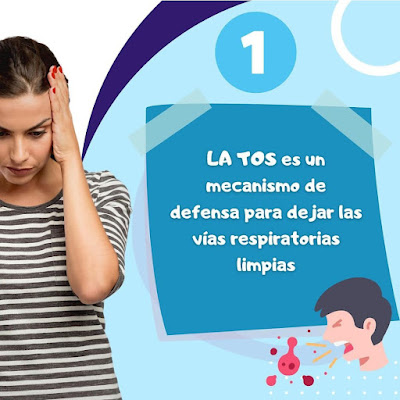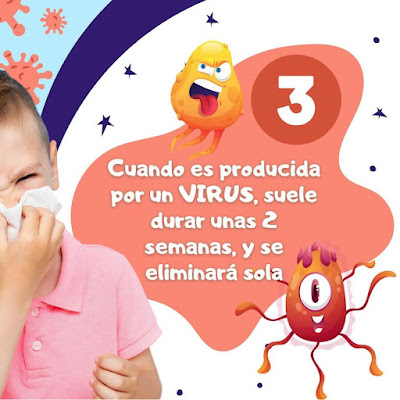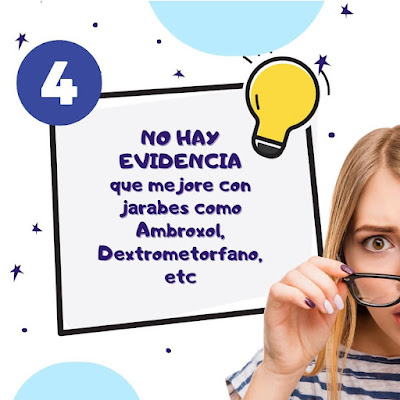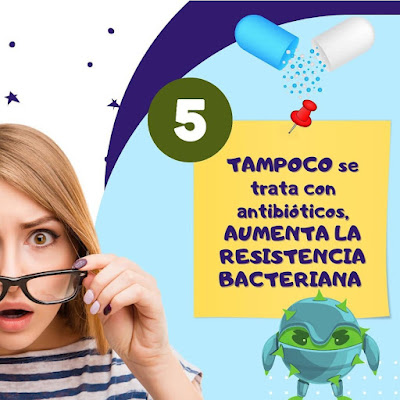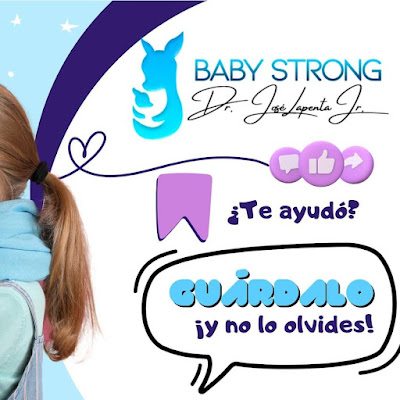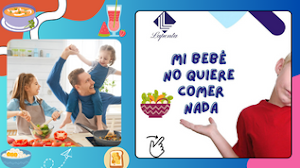Porque NO deben usarse ANTITUSIVOS en niños con Tos
Why ANTITUSSIVES should NOT be used in children with cough
EDITORIAL ESPAÑOL
==================
El uso de los antitusivos o remedios para la tos en los niños
ante un resfriado común, no debe ser una práctica adecuada y te
explicare las razones y motivos para no utilizarlos, aunque es
una costumbre muy arraigada en la población.:
1.) La tos es un mecanismo de defensa del organismo: mediante ella, son expulsadas partículas de las vías
respiratorias para dejarlas limpias. Es un mecanismo fisiológico
del sistema respiratorio, el cual reacciona ante cuerpos extraños
o secreciones acumuladas en el.
2.) Permite eliminar secreciones: La tos permite expulsar de las vías respiratorias
el MOCO y cuerpos extraños. Si administramos un
ANTITUSIVO, inhibimos el mecanismo fisiológico de esta y se
acumularan estas secreciones o partículas en las vías
respiratorias.
3,) Tos producida por virus: La tos del
resfriado común, catarro o gripe, suele durar 1 - 2 semanas
y por lo general desaparece sola. La mayoría de los
resfriados en los niños desaparecen espontáneamente, sin
grandes complicaciones, y el uso de los antitusivos no
va a cambiar el curso natural ni lo harán desaparecer más
rápido.
4.) No existe evidencia de mejoría con antitusivos: Está probado que el
dextrometorfano, codeína o ambroxol no mejoran sustancialmente la tos en la gripe o
catarro común, y su uso además puede provocar efectos
secundarios como confusión y sedación.
5.) Darles antibióticos tampoco es una solución: El
uso de los antibióticos en un resfriado común de tipo
viral no tendrá efecto, estos se usan para la
infecciones bacterianas tipo neumonía u otras, y
utilizarlos indiscriminadamente por automedicación lo
que provocará es la generación de resistencia
bacteriana.
Cuándo debemos preocuparnos, signos de
alarma!: Evidentemente no todos los resfriados
evolucionan satisfactoriamente, y hay que estar
atento ante los siguientes síntomas:
- Tos de más de 2 a 3 semanas de
evolución:
Indicativo de que el resfriado ha evolucionado
tórpidamente.
- Tos que termina en vómito: se
producirá intolerancia alimentaria y hay que
acudir al especialista.
- Tos que pone la piel del niño
morada:
Es un indicativo de falta de oxigenación y
baja saturación de oxígeno.
- Tos acompañada de silbido el
el pecho: Es un síntoma de
obstrucción de las vias
respiratorias por excesiva acumulacion
de secreciones.
- Tos con dificultad para
respirar:
Síntoma de
obstrucción de
vías respiratorias o
constricción de las mismas,
frecuente en los niños
asmáticos.
Si notas alguno de estos síntomas
debes acudir al médico
especialista para su tratamiento
adecuado, y hoy en dia despues de
la pandemia del Sars.Cov-2
donde el órgano principal afectado
es el pulmón, hay que estar
atentos ante cualquier
irregularidad en una gripe o
catarro común, y actuar
rápidamente antes de que empeore
la situación.
EDITORIAL ENGLISH
==================
The use of antitussives or
cough remedies in children when
faced with a common cold should
not be an appropriate practice
and I will explain the reasons
and reasons for not using them,
although it is a deep-rooted
custom in the population:
1.) Cough is a defense
mechanism of the body:
through it, particles are
expelled from the respiratory
tract to leave them clean. It is
a physiological mechanism of the
respiratory system, which reacts
to foreign bodies or secretions
accumulated in it.
2.) Allows the elimination of
secretions:
Coughing allows the MUCO and
foreign bodies to be expelled
from the respiratory tract. If
we administer an ANTITUSIVE, we
inhibit its physiological
mechanism and these secretions
or particles will accumulate in
the respiratory tract.
3,) Cough caused by viruses:
The cough from the common cold,
cold or flu usually lasts 1 - 2
weeks and usually disappears on
its own. Most colds in children
disappear spontaneously, without
major complications, and the use
of antitussives will not change
the natural course or make it
disappear faster.
4.) There is no evidence of
improvement with
antitussives:
It is proven that
dextromethorphan, codeine or
ambroxol do not substantially
improve cough in the flu or
common cold, and their use can
also cause side effects such as
confusion and sedation.
5.) Giving them antibiotics
is not a solution either:
The use of antibiotics in a
common viral cold will have no
effect, these are used for
bacterial infections such as
pneumonia or others, and using
them indiscriminately for
self-medication will cause the
generation of bacterial
resistance.
When we should worry, warning
signs!:
Obviously not all colds evolve
satisfactorily, and we must be
alert for the following
symptoms:
- Cough lasting more than 2
to 3 weeks:
Indicative that the cold has
progressed slowly.
- Cough that ends in
vomiting:
food intolerance will occur and
you must go to the
specialist.
- Cough that turns the
child's skin purple:
It is indicative of lack of
oxygenation and low oxygen
saturation.
- Cough accompanied by
wheezing in the chest:
It is a symptom of obstruction
of the respiratory tract due to
excessive accumulation of
secretions.
- Cough with difficulty
breathing: Symptom of airway obstruction
or constriction, common in
asthmatic children.
If you notice any of these
symptoms you should go to a
specialist doctor for
appropriate treatment, and today
after the Sars.Cov-2 pandemic
where the main organ affected is
the lung, we must be alert to
any irregularity in the flu or
common cold, and act quickly
before the situation
worsens.



